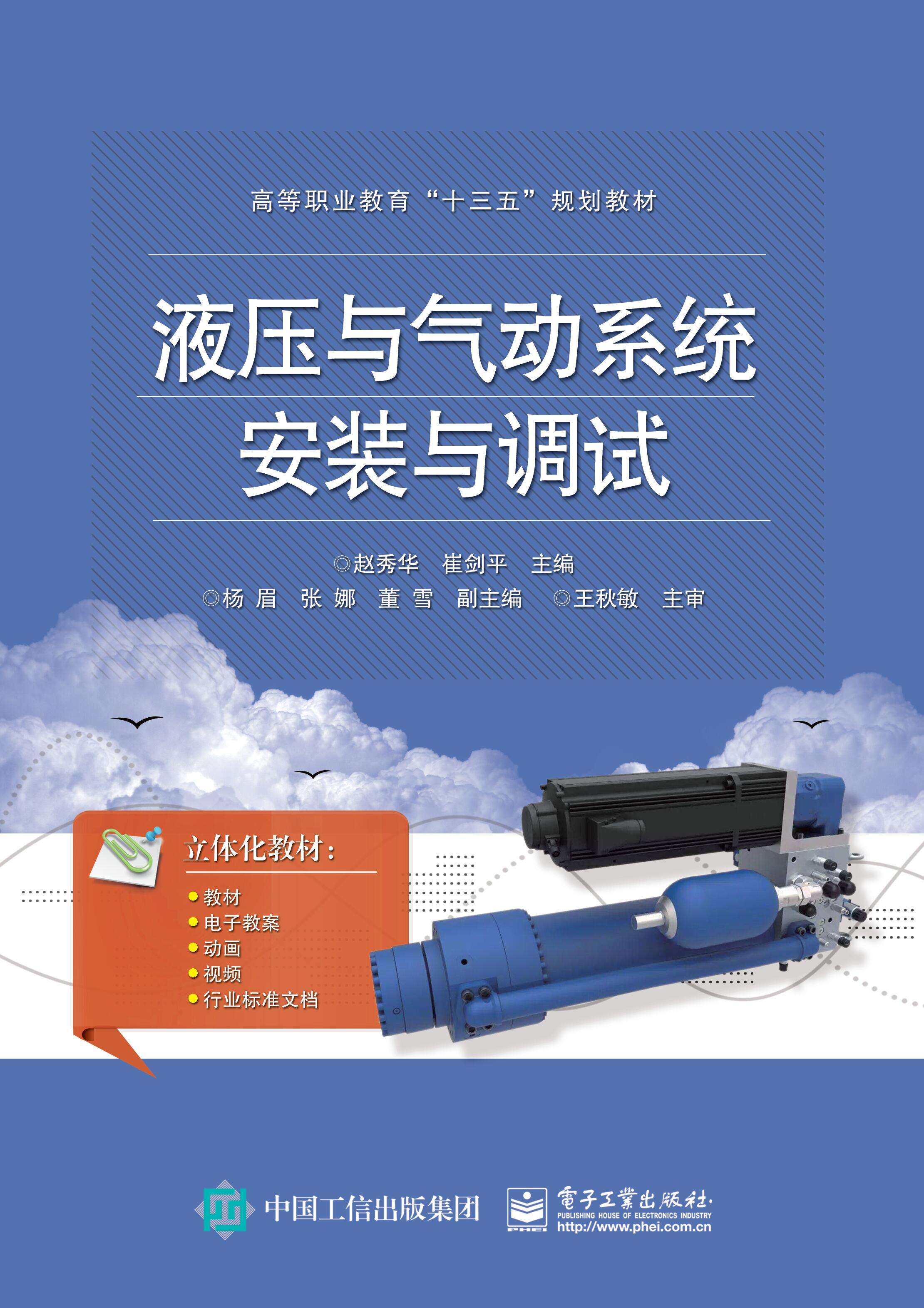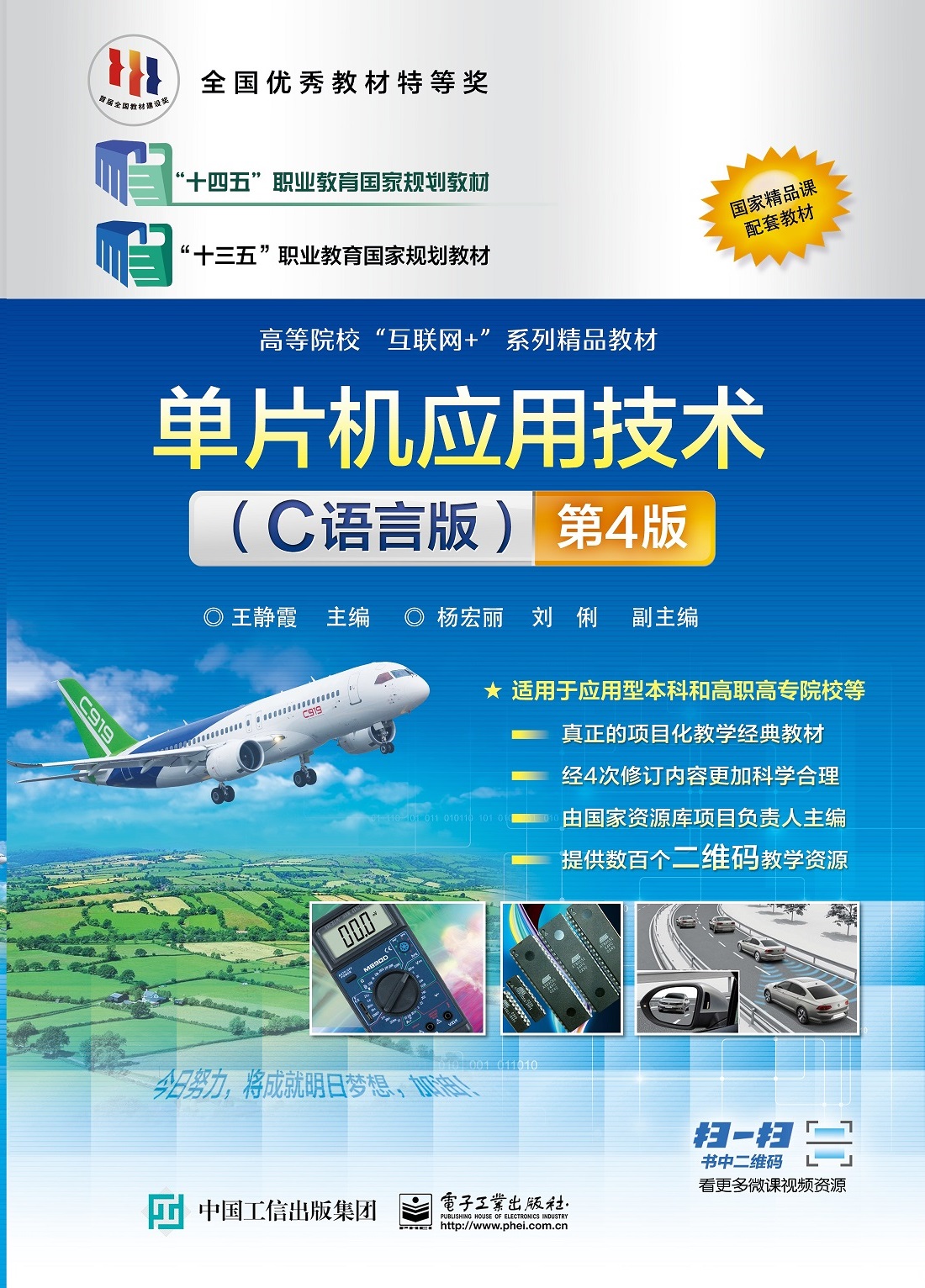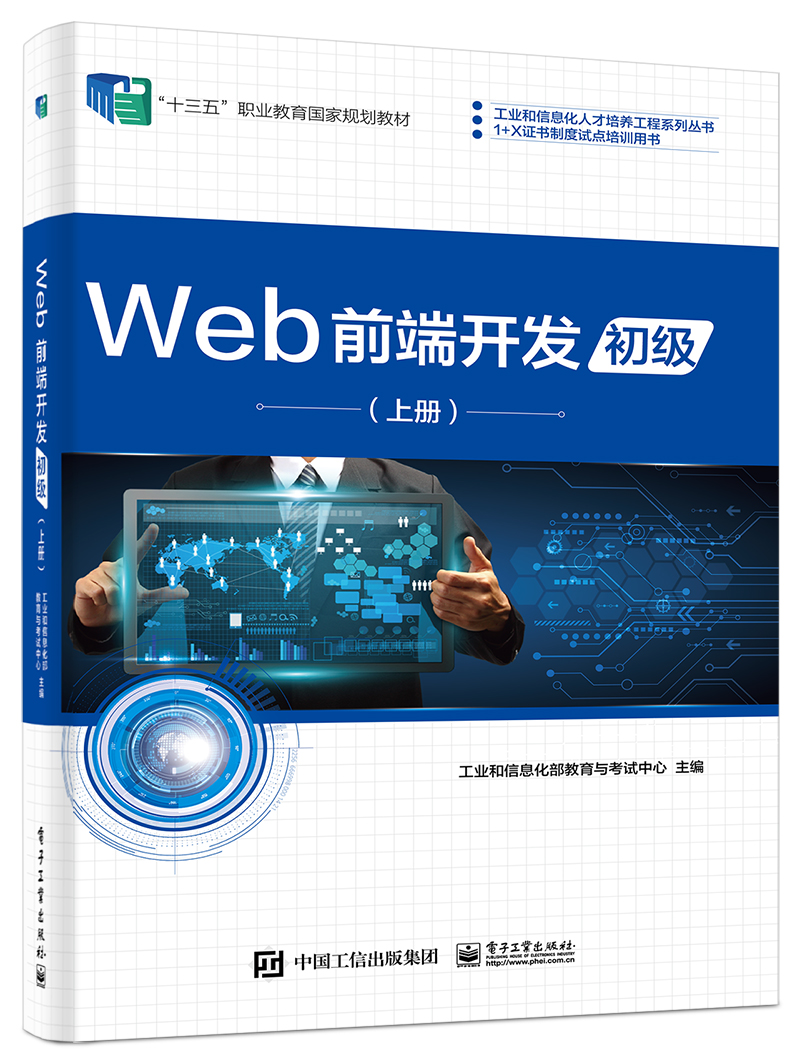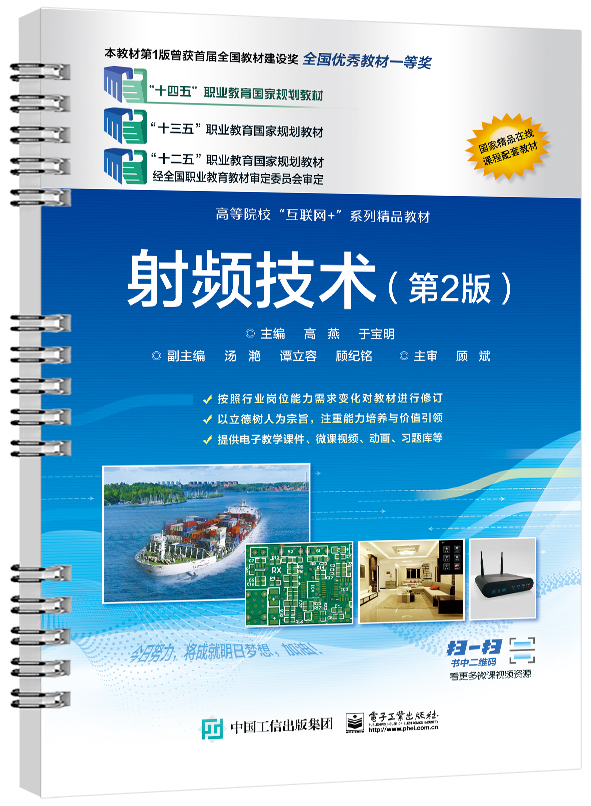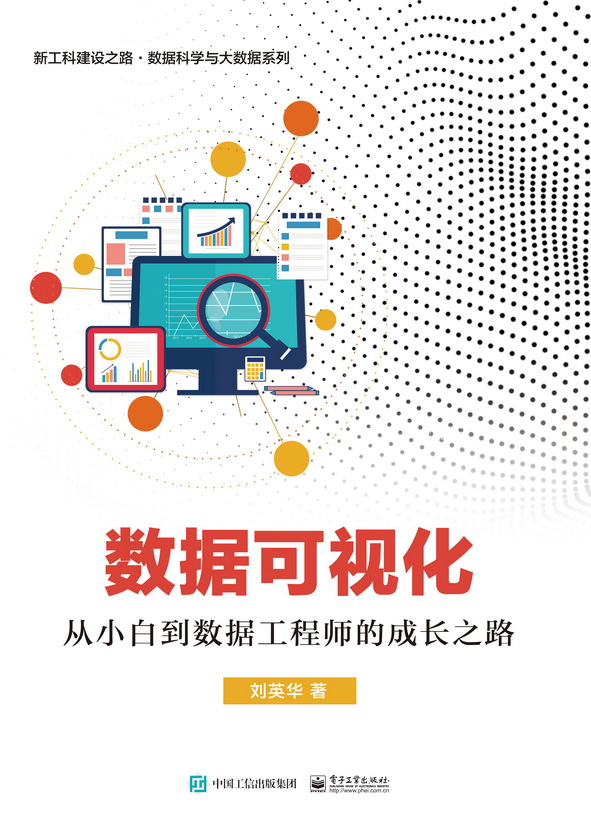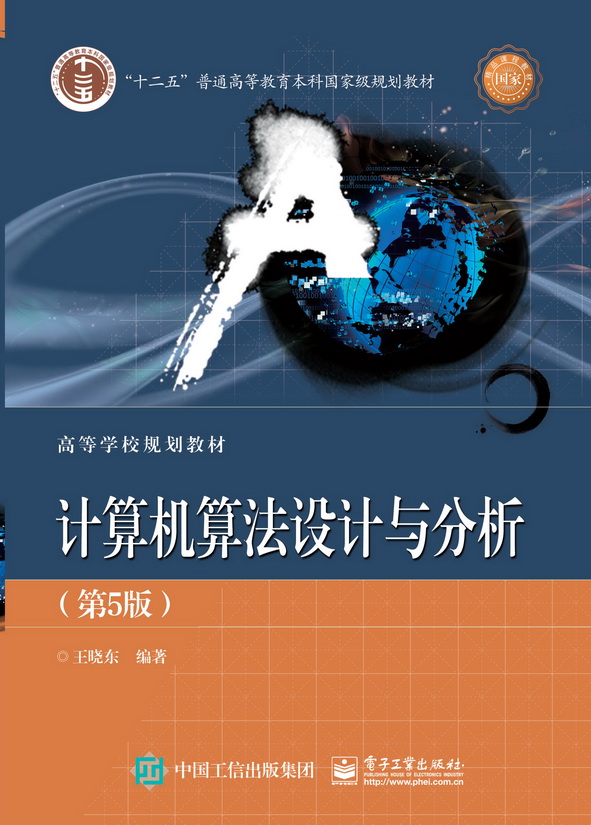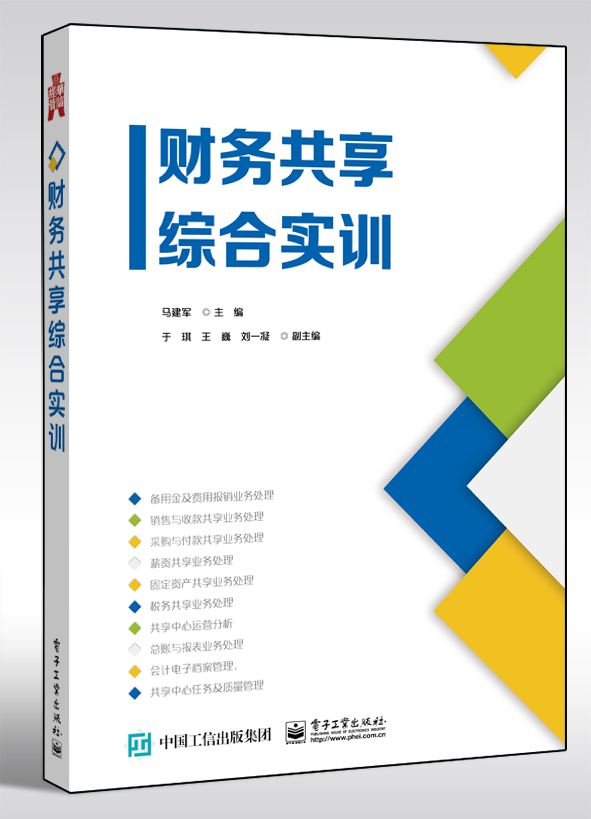液压与气动系统安装与调试
丛 书 名:
高等教育“十三五”规划教材
作 译 者:赵秀华,崔剑平
出 版 日 期:2018-03-01
书 代 号:G0330920
I S B N:9787121330926
图书简介:
本本书定位于高等职业院校机电、机械类专业基础教材,教材突出现场实用性,引入现代企业实用技术。全书内容共分为八个学习项目,分别为液压与气动技术基础、工作介质—液压油、液压泵站、液压缸/液压马达的拆装与选用、液压阀组的拆装与元件选用、液压回路安装与调试、液压系统安装调试与故障分析、气动回路安装与调试。
定价 49.9
您的专属联系人更多
联系人:李静
电话:010-88254604
邮箱:lijing@phei.com.cn
-
配 套 资 源
本书资源
本书暂无资源会员上传本书资源
-
图 书 内 容
内容简介
本本书定位于高等职业院校机电、机械类专业基础教材,教材突出现场实用性,引入现代企业实用技术。全书内容共分为八个学习项目,分别为液压与气动技术基础、工作介质—液压油、液压泵站、液压缸/液压马达的拆装与选用、液压阀组的拆装与元件选用、液压回路安装与调试、液压系统安装调试与故障分析、气动回路安装与调试。图书详情
ISBN:9787121330926开 本:16开页 数:356字 数:534本书目录
目 录 项目 1 液压与气压传动技术基础 (Item1 Fundamentals of Hydraulic and Pneumatic Transmission Technology) 1 任务 1.1 认识液压与气压传动的特点及应用(Task1.1 Cognitive the Characteristics and Application of Hydraulic and Pneumatic Transmission) 1 1.1.1 液压与气压传动的定义(Definition of Hydraulic and Pneumatic Transmission) 2 1.1.2 液压与气压传动发展(Development of Hydraulic and Pneumatic Transmission) 2 1.1.3 液压与气压传动的优缺点(Advantages and Disadvantages of Hydraulic and Pneumatic Transmission) 4 1.1.4 液压与气压传动的应用(Application of Hydraulic and Pneumatic Transmission) 5 任务 1.2 液压千斤顶、平面磨床工作台液压系统工作过程分析(Task1.2 Working Process Analysis of Hydraulic Jack and Surface Grinder Table Hydraulic System) 7 1.2.1 液压千斤顶液压系统工作过程分析(Working Process Analysis of Hydraulic Jack System) 8 1.2.2 平面磨床工作台液压系统工作过程分析(Working Process Analysis of Surface Grinder Table Hydraulic System) 10 1.2.3 液压与气压传动系统的组成和表示方法(Composition and Representation of Hydraulic and Pneumatic Transmission System) 11 项目 2 液压油及其流动特性分析 (Item2 Analysis of Hydraulic Oil and Its Flow Characteristics) 15 任务 2.1 液压油的辨识与选用(Task2.1 Identification and Selection of Hydraulic Oil) 15 2.1.1 液压油的种类(Types of Hydraulic Oils) 16 2.1.2 液压油的辨识(Identification of Hydraulic Oil) 17 2.1.3 影响液压油黏度的因素(Factors Affecting Viscosity of Hydraulic Fluid) 20 2.1.4 液压油的选择(Selection of Hydraulic Oils) 21 任务 2.2 压力形成分析(Task2.2 Pressure Formation Analysis) 24 2.2.1 压力形成(Pressure Formation) 25 2.2.2 静压力及其特性(Static Pressure and Its Characteristics) 26 2.2.3 压力表示方法(Representation of Pressure) 26 2.2.4 帕斯卡定理(Pascal’s Law) 27 任务 2.3 分析液体的流动状态与能量形式(Task2.3 Analysis of Flowing State and Energy Form of Liquid) 29 2.3.1 流动的产生(Formation of Flowing) 30 2.3.2 流量和流速(Quantity and Velocity of Flow) 30 2.3.3 液体的流动状态(The Flowing State of a Liquid) 32 2.3.4 连续性方程(Continuity Equation) 33 2.3.5 伯努利方程(Bernoulli Equation) 34 2.3.6 管道内的压力损失(Pressure Loss In Pipe) 35 2.3.7 热交换器(Heat Exchanger) 37 任务 2.4 液压油的污染和控制(Task2.4 Hydraulic Oil Contamination and Control) 40 2.4.1 工作介质污染原因(Reasons for the Pollution of the Working Medium) 41 2.4.2 工作介质污染的危害(Hazards of Working Medium Pollution) 42 2.4.3 工作介质污染控制(Work Medium Pollution Control) 42 2.4.4 滤油器的选用(Selection of Oil Filters) 44 2.4.5 空气滤清器的选用(Selection of Air Filter) 49 任务 2.5 分析液压冲击和气穴现象(Task2.5 Analysis of Hydraulic Shock and Cavitation) 52 2.5.1 分析液压冲击现象(Analysis of Hydraulic Shock) 53 2.5.2 分析气穴现象(Analysis of Cavitation) 54 2.5.3 利用蓄能器吸收液压冲击(Using Accumulator to Absorb Hydraulic Shock) 56 项目 3 液压泵工作特性分析与选用 (Item3 Working Characteristics Analysis and Selection of Hydraulic Pump) 64 任务 3.1 液压泵工作原理和性能参数(Task3.1 Working Principle and Performance Parameters of Hydraulic Pump) 64 3.1.1 液压泵的工作原理和分类(The Working Principle and Classification of Hydraulic Pump) 65 3.1.2 液压泵的性能参数(Performance Parameters of Hydraulic Pumps) 67 任务 3.2 齿轮泵工作特性分析(Performance Characteristic Analysis of Gear Pump) 70 3.2.1 外啮合齿轮泵工作特性分析(Performance Characteristic Analysis of External Gear Pump) 71 3.2.2 内啮合齿轮泵工作特性分析(Performance Characteristic Analysis of Internal Gear Pump) 74 3.2.3 齿轮泵优缺点(Advantages and Disadvantages of Gear Pumps) 75 任务 3.3 叶片泵工作特性分析(Task3.3 Performance Characteristic Analysis of Vane Pump) 77 3.3.1 单作用叶片泵工作特性分析(Performance Characteristic Analysis of Single-acting Vane Pump) 78 3.3.2 双作用叶片泵工作特性分析(Performance Characteristic Analysis of Double-acting Vane Pump) 79 3.3.3 限压式变量叶片泵工作特性分析(Performance Characteristic Analysis of Limited Pressure Variable Vane Pump) 80 3.3.4 叶片泵的优缺点(Advantages and Disadvantages of Vane Pump) 81 任务 3.4 柱塞泵工作特性分析(Task3.4 Performance Characteristic Analysis of Ram Pump) 82 3.4.1 轴向柱塞泵工作特性分析(Performance Characteristic Analysis of Axial Piston Pump) 83 3.4.2 径向柱塞泵工作特性分析(Performance Characteristic Analysis of Radial Piston Pump) 85 3.4.3 柱塞泵优缺点(Advantages and Disadvantages of Piston Pump) 86 项目 4 液压缸/液压马达的工作特性分析与选用(Item4 Working Characteristic Analysis and selection of Hydraulic Cylinder / Hydraulic Motor) 89 任务 4.1 液压缸工作特性分析(Task4.1 Working Characteristic Analysis of Hydraulic Cylinder) 89 4.1.1 液压缸的分类(Classification of Hydraulic Cylinders) 91 4.1.2 液压缸的工作特点(Working Characteristics of Hydraulic Cylinder) 93 任务 4.2 液压缸典型结构分析(Task4.2 Typical Structure Analysis of Hydraulic Cylinder) 103 4.2.1 缸体组件结构分析(Structure Analysis of Cylinder Block Assembly) 104 4.2.2 活塞组件结构分析(Structure Analysis of Piston Assembly) 105 4.2.3 密封与防尘装置结构分析(Structure Analysis of Sealing and Dust-proof Device) 106 4.2.4 缓冲装置结构分析(Structure Analysis of Buffer) 106 4.2.5 排气装置结构分析(Structure Analysis of Exhausted Apparatus) 107 任务 4.3 液压马达的选用(Task4.3 Selection of Hydraulic Motors) 109 4.3.1 液压泵和液压马达的区别(The Difference between Hydraulic Pump and Hydraulic Motor) 111 4.3.2 液压马达的分类及图形符号(Classification and Graphical Symbols for Hydraulic Motors) 111 4.3.3 液压马达的工作原理(Working Principle of Hydraulic Motor) 112 4.3.4 液压马达的性能参数(Performance Parameters of Hydraulic Motors) 114 4.3.5 液压马达的调速(Speed Regulation of Hydraulic Motor) 115 项目 5 方向控制阀及方向控制回路 (Item5 Direction Control Valve and Direction Control Circuit) 120 任务 5.1 换向阀原理分析及换向回路、卸荷回路安装与调试(Task5.1 Principle Analysis of Reversing Valve,Installation and Debugging of Reversing Circuit and Unloading Circuit) 121 5.1.1 换向阀原理分析(Principle Analysis of Reversing Valve) 122 5.1.2 换向回路安装与调试(Installation and Debugging of Reversing Circuit) 130 5.1.3 三位换向阀的中位机能及卸荷回路(Median Function of Three Position Reversing Valve and Relief Circuit) 130 任务 5.2 单向阀原理分析及锁紧回路、保压回路安装与调试(Task5.2 The Principle Analysis of Non-return Valve,Installation and Debugging of Locking Circuit and Pressure Circuit) 135 5.2.1 普通单向阀原理分析(Principle Analysis of Nonreturn Valve) 136 5.2.2 液控单向阀原理分析(Principle Analysis of Hydraulic Control Nonreturn Valve) 138 5.2.3 保压回路安装与调试(Installation and Debugging of Pressure Maintaining Circuit) 139 5.2.4 锁紧回路安装与调试(Installation and Debugging of Locking Circuit) 141 项目 6 压力控制阀及压力控制回路 (Item6 Pressure Control Valve and Pressure Control Circuit) 146 任务 6.1 溢流阀原理分析及调压回路安装与调试 (Task6.1 The Principle Analysis of Overflow Valve and Pressure Regulating Circuit Installation and Debugging) 146 6.1.1 直动式溢流阀原理分析(Principle Analysis of Direct Overflow Valve) 148 6.1.2 先导式溢流阀原理分析(Principle Analysis of Pilot Operated overflow Valve) 149 6.1.3 溢流阀的特点(Characteristics of Overflow Valve) 150 6.1.4 溢流阀的应用(Application of Overflow Valve) 150 6.1.5 调压回路安装与调试(Installation and Debugging of Pressure Regulating Circuit) 151 6.1.6 采用先导式溢流阀的卸荷回路(Relief Circuit Using Pilot Operated Overflow Valve) 154 6.1.7 溢流阀的静态特性(Static Characteristics of Overflow Valve) 154 任务 6.2 顺序阀原理分析及顺序动作回路、平衡回路安装与调试(Task6.2 Sequence Valve Principle Analysis and Sequence Action Circuit,Balance Circuit Installation and Debugging) 159 6.2.1 顺序阀原理分析(Sequential Valve Principle Analysis) 160 6.2.2 顺序阀图形符号(Graphical Symbols of Sequential Valves) 161 6.2.3 顺序阀特点(Characteristics of Sequential Valves) 161 6.2.4 顺序阀的应用(Application of Sequence Valve) 161 6.2.5 顺序动作回路安装与调试(Installation and Debugging of Sequence Action Circuit) 161 6.2.6 平衡回路安装与调试(Installation and Debugging of Balance Circuit) 165 任务 6.3 减压阀原理分析及减压回路安装与调试(Task6.3 Principle Analysis of Decompress Valve and Installation and Debugging of Decompress Circuit) 169 6.3.1 减压阀原理分析(Principle Analysis of Decompress Valve) 171 6.3.2 减压阀特点(Characteristics of Decompress Valve) 172 6.3.3 溢流阀、减压阀、顺序阀比较(Comparison of Relief Valve,Decompress Valve,and Sequence Valve) 172 6.3.4 减压回路安装与调试(Installation and Debugging of Decompress Circuit) 173 任务 6.4 压力继电器原理分析及应用(Task6.4 Principle Analysis and Application of Pressure Relay) 178 6.4.1 压力继电器原理分析(Principle Analysis of Pressure Relay) 178 6.4.2 压力继电器的工作性能(Working Performance of Pressure Relay) 179 6.4.3 压力继电器的应用(Application of Pressure Relay) 180 项目 7 流量控制阀及速度控制回路 (Item7 Flow Control Valve and Speed Control Circuit) 183 任务 7.1 节流阀、调速阀原理分析及节流调速回路安装与调试(Task7.1 Principle Analysis of Throttle valve and Governor Valve,Installation and Debugging of Throttle Governing Circuit) 183 7.1.1 节流阀原理分析(Principle Analysis of Throttle Valve) 184 7.1.2 节流调速回路(Throttle Governing Circuit) 187 7.1.3 调速阀原理分析(Principle Analysis of Governor Valve) 190 7.1.4 容积节流调速回路(Volume and Throttling Governing Circuit) 192 任务 7.2 快速运动回路安装与调试(Task7.2 Installation and debugging of Fast movement circuit) 194 7.2.1 差动连接的快速运动回路(Fast Motion Loop with Differential Connection) 195 7.2.2 双泵供油的快速运动回路(Fast Motion Loop of Double Pumps) 196 7.2.3 采用蓄能器的快速运动回路(Fast Motion Loop Using Accumulator) 197 任务 7.3 速度换接回路安装与调试(Task7.3 Installation and Debugging of Speed Transition Circuit) 199 7.3.1 快进-工进速度换接回路(Fast and Work Feeding Speed Transition Circuit) 199 7.3.2 二次进给回路(Secondary Feed Circuit) 200 项目 8 液压泵站安装与调试 (Item8 Installation and Debugging of Hydraulic Power Unit) 206 任务 8.1 液压泵站的安装与调试(Task8.1Installation and Debugging of Hydraulic Power Unit) 207 8.1.1 液压泵站的组成及工作原理(The Composition and Working Principle of Hydraulic Power Unit) 207 8.1.2 液压泵站辅助元件及应用(Auxiliary Component of Hydraulic Power Unit and Its Application) 211 8.1.3 液压泵站的安装与调试(Installation and Debugging of Hydraulic Power Unit) 222 任务 8.2 液压阀组的安装与调试(Task8.2 Installation and Debugging of Hydraulic Valve Group) 226 8.2.1 液压阀的叠加式连接(Hydraulic Valve Stacking Connection) 227 8.2.2 液压阀组的设计与安装步骤(The Design and Installation Steps of The Hydraulic Valve Group) 227 8.2.3 液压阀的选用(Selection of Hydraulic Valve) 229 8.2.4 液压集成块的设计(Design of Hydraulic Manifold Blocks) 232 8.2.5 液压叠加阀组的安装与调试(Installation and Debugging of Hydraulic Valve Group) 235 8.2.6 插装阀与伺服阀(Cartridge Valve and Servo Valve) 237 项目 9 液压系统的调试与故障分析 (Item9 Debugging and Fault Analysis of Hydraulic System) 248 任务 9.1 典型液压系统分析(Task9.1 Analysis of Typical Hydraulic System) 248 9.1.1 YT4543 型动力滑台液压系统分析(Hydraulic System Analysis of YT4543 Power Sliding Table) 249 9.1.2 汽车起重机液压系统(Hydraulic System of Truck Crane) 252 9.1.3 工业机械手液压系统分析(Analysis of Industrial Manipulator Hydraulic System) 255 任务 9.2 液压比例系统安装与调试(Task9.2 Installation and Debugging of Hydraulic Proportional System) 262 9.2.1 比例控制技术(Proportional Control Technology) 262 9.2.2 比例电磁铁(Proportional Electromagnet) 264 9.2.3 比例方向阀(Proportional Direction Valve) 264 9.2.4 比例压力阀(Proportional Pressure Valve) 267 9.2.5 比例流量阀(Proportional Flow Valve) 269 9.2.6 位移传感器(Displacement Sensor) 269 9.2.7 液压比例综合控制系统的调试(Debugging of Hydraulic Proportional Comprehensive Control System) 271 任务 9.3 液压系统的故障诊断与排除(Task9.3 Fault Diagnosis and Clearance of Hydraulic System) 282 9.3.1 故障诊断中遵循的原则(Principles to Follow In Fault Diagnosis) 282 9.3.2 液压系统故障诊断方法(Fault Diagnosis Approach of Hydraulic System) 283 9.3.3 常见液压系统故障(Common Faults in Hydraulic System) 283 9.3.4 液压系统的设计(Hydraulic System Design) 286 项目 10 气动回路的安装与调试 (Item10 Installation and Debugging of Pneumatic Circuit) 297 任务 10.1 气源装置及气动辅件的使用(Task10.1 Using of Air Supply Device and Pneumatic Accessory) 298 10.1.1 气压发生装置(Pressure Generating Device) 299 10.1.2 气源净化设备(Air Cleaning Equipment) 301 10.1.3 气动辅件(Pneumatic Attachments) 305 10.1.4 气动三联件的使用(Using of Pneumatic Triple Parts) 305 任务 10.2 方向控制回路设计、安装与调试(Task10.2 Design,Installation and Debugging of Direction Control Circuit ) 310 10.2.1 气动执行元件的选择(Selection of Pneumatic Actuator) 311 10.2.2 气动换向阀的选用(Selection of Pneumatic Reversing Valve) 318 10.2.3 方向控制回路安装与调试(Installation and Debugging of Direction Control Circuit) 320 任务 10.3 速度控制回路设计、安装与调试(Task10.3 Design,Installation and Debugging of Speed Control Circuit ) 323 10.3.1 流量控制阀的选用(Selection of Flow Control Valve) 324 10.3.2 双作用气缸调速回路(Double Acting Cylinder Speed Adjusting Circuit) 325 10.3.3 气液联动速度控制回路(Airdraulic Speed Control Circuit) 326 任务 10.4 压力控制回路设计、安装与调试(Task10.4 Design,Installation and Debugging of Pressure Control Circuit) 328 10.4.1 压力控制阀的选用(Selection of Pressure Control Valve) 329 10.4.2 压力控制回路安装与调试(Installation and Debugging of Pressure Control Circuit) 331 任务 10.5 气动逻辑回路安装与调试(Task10.5 Installation and Debugging of Pneumatic Logic Circuit) 333 10.5.1 梭阀的选取和使用(Selection and Use of Shuttle Valve) 334 10.5.2 双压阀的选取和使用(Selection and Use of Dual Pressure Valve) 335 10.5.3 快速排气阀的选择和使用(Selection and Use of Quick Exhaust Air Valve) 336 10.5.4 延时阀的选取和使用(Selection and Use of Phasing Time-delay Valve) 338 参考文献 343展开前 言
前 言 本书是根据高等职业教育《液压与气动系统安装与调试》教学大纲的要求,结合高等职业教育的特点及机械、机电类专业的人才培养目标和职业教育教学改革实践经验,本着“理论知识必须够用为度、培养实践技能、重在技术应用”的原则编写的。本书的编写是以切实培养和提高高等职业院校机电类专业学生的职业技能为目的,突出实用性和针对性,不拘泥于理论研究,注重理论与实际应用相结合,强调应用能力的培养。本书可作为高等职业院校机电、机械类相关专业的通用教材,也可作为液压与气动技术相关培训的培训教材及有关工程技术人员工作的参考书。 本书共分为十个学习项目,分别为液压与气压传动技术基础、液压油及其流动特性分析、液压泵工作特性分析及选用、液压缸/液压马达的工作特性分析与选用、方向控制阀及方向控制回路、压力控制阀及压力控制回路、流量控制阀及速度控制回路、液压泵站安装与调试、液压系统的调试与故障分析、气动回路的安装与调试。每个项目下设置多个学习任务,每个任务均采用“任务驱动”的模式组织内容,每个任务下都设有精选的任务检查与考核题目,题目形式多样,对于学生加深基本概念的理解、加强分析能力的训练等都是有益的。 本书在编写形式上打破了传统的知识框架。液压部分的内容将液压基本回路与液压元件的内容合并在一起编写,将液压基本回路的内容放在各液压元件的应用讲解中,没有单独设置液压基本回路的章节,精简了内容,也符合教师讲解的特点;将液压辅助元件的内容融入到相应的学习内容中,哪里用到哪里讲,让学生知道这些元件用在哪里、怎么用。气动部分的内容根据设置的任务编写,既遵循了“哪里用到哪里讲”的原则,又保证了知识的完整性和系统性,编写思路有新意,为同类教材所少见。同时,根据高等职业教育双语教学的要求,将专业英语词汇和句子融入教材内容,便于学生学习液压与气动知识相关的专业英语内容。 在内容上,本书增加了企业实际应用的液压泵站和液压叠加阀组相关的内容,同时介绍了新技术(如比例控制阀和位移传感器),以培养技能型人才为目标,满足新形势下课程教学的需要。 本书的名词术语、液压气动图形符号、单位、物理符号等都统一采用国家最新标准。 本书配套数字化教学资源有:电子课件、动画、行业标准等。 本书由山东职业学院赵秀华、崔剑平担任主编并负责统稿。参加本书编写工作的有山东理工职业学院杨眉(项目四)、山东职业学院崔剑平(项目八、项目九)、赵秀华(项目二、项目三、项目六)、张娜(项目十)、徐晓丹(项目七),山东交通职业技术学院董雪(项目一、项目五)。全书由山东职业学院王秋敏主审。在本书编写过程中山东大学刘延俊教授、山东拓普液压气动有限公司张莹莹工程师等提出了宝贵意见和建议,在此表示衷心地感谢。 由于编者水平有限,本书难免存在疏漏和不足之处,在此恳请广大读者批评指正。展开作者简介
本书暂无作者简介 -
样 章 试 读
-
图 书 评 价 我要评论

